Does it Stay or Does it Go? Programmatic Evaluation in a Time of Shift
A key tenet of a healthy organization is a system of regular programmatic evaluation to determine which efforts are bringing return, which need to be sunset, and where programmatic invention/investment is needed.
In this moment of daily-shift, in order to survive and thrive, associations are being forced into rapid resource evaluation conversations that demand programmatic prioritization. From an output-first standpoint, the association landscape is full of examples of organizations pivoting to create the in-time value their members and industries need – daily briefings, webcast updates, COVID communities, and pivots to virtual meetings and learning approaches. Truly, our organizations are demonstrating daily the Power of “A” – the strength industries find in their association serving as a professional hub and home.
As organizations refocus to create these new value outputs, which existing products or services are being put on hold/eliminated to create the space to do so? As our virtual work life becomes ever more normalized, what were initially emergency measures are becoming new realities. Associations are looking at their P&L sheets, creating new projections, and having difficult conversations around everything from when to trigger event insurance to staff pay reductions/furloughs/releases. As a next step in this adjustment, organizational governance is being asked the difficult question of where to pull back. Their association can’t do everything. The formats in which the organization has traditionally provided value and operated have shifted, and the needs the organization is trying to meet look radically different than a few weeks ago.
In a time where so much has changed due to crisis, bringing forward programmatic decisions that are one-off, go/no go decisions are causing feelings of fear and loss. Knowing these rapid-decision points are going to continue to emerge, a revised system and language of evaluation that can serve as a foundation for discussions among the Board can help distance the feelings associated with having to simply stop doing those things which have been normative for so long. This can help our leaders refocus on future-oriented choices of greater impact and value to sustain and expand the worth the organization provides to the industry and the members it represents.
Measures of Programmatic Impact
Board members need a simple snapshot of return for each output of the organization if they are going to evaluate what should be kept, invested in, or sunset. While generating a full Program Impact Matrix is ideal, in times of duress, a simple listing with three columns for each program may help.
Fiscal Return – Without funds there is no organization. Which line items provide the means by which the association can create necessary mission-focused outputs? In thinking about where those lines of revenue come from, what modifications need to be made to ensure they evolve to fit the current environment?
Mission Return – Not every output the organization produces has the same impact on mission. Which are mission critical? Which are mission aligned? Which are mission minimal – having outlived their time or no longer serve a greater audience?
Momentary Return – This moment in time has highlighted organizational output areas that have either taken on greater relevance or have been quickly created to serve the needs of an isolated, digitally connected constituency. Which of these are current context relevant? Which provide value only until a sense of next-normalcy is realized?
Each of these factors can be used to create a balanced ranking of organizational outputs most valuable to members in this short-term, difficult time.
Language of Evaluation
With a resource in place by which a Board can see the snapshot of programmatic impact, a second, helpful strategy is to expand the language of evaluation they use. The decision of where to align resources is not just in funding – it is also in staff time, volunteer time, and communications space. Rather than a go/no-go decision for a program, consider this five-level system.
Invest – These programs are best serving the needs of the membership and the organization right now. They may be new efforts, never-before tried, or modifications to existing programs – having emerged from COVID-19 response. The gradient of investment should include consideration of the potential long-term value and return of the solution under consideration.
Maintain – These programmatic efforts are continuing to bring value and return to the organization as currently structured.
Modify – These outputs and efforts have potential to serve the organization well in this moment, but not in their current form. It is worth an investment of resources to increase their potential value and return with specific guidance on what to invest and what is expected from the investment.
Pause – This is perhaps the most powerful tool. Instead of elimination, leadership can choose to put a program on hold for a time period (e.g. we are going to forgo the personalized mugs this year) and return to it for evaluation at a future time. At the future time, when emotions are muted; an objective decision about the value of the program can be made with information collected during the pause period.
Sunset – Whether it is because we are in the midst of more permanent changes or due to temporary reduction in resources, there will be those efforts which have run their course. Capacity isn’t infinite – organizational strength is found in saying yes to the right things, and in recognizing and acting upon those that have ceased to provide meaningful value and return.
Once created, a grid of programmatic returns with action recommendations can become a powerful governance tool for use during tumultuous times as well as more stable ones.
In the end, at this moment every association is faced with having to make rapid, critical decisions of resource and value. Establishing a system of value contrast, incorporate a language of commitment gradients - each of these tools will help your governance not only lead through crisis, but author the hopeful future our members need.
